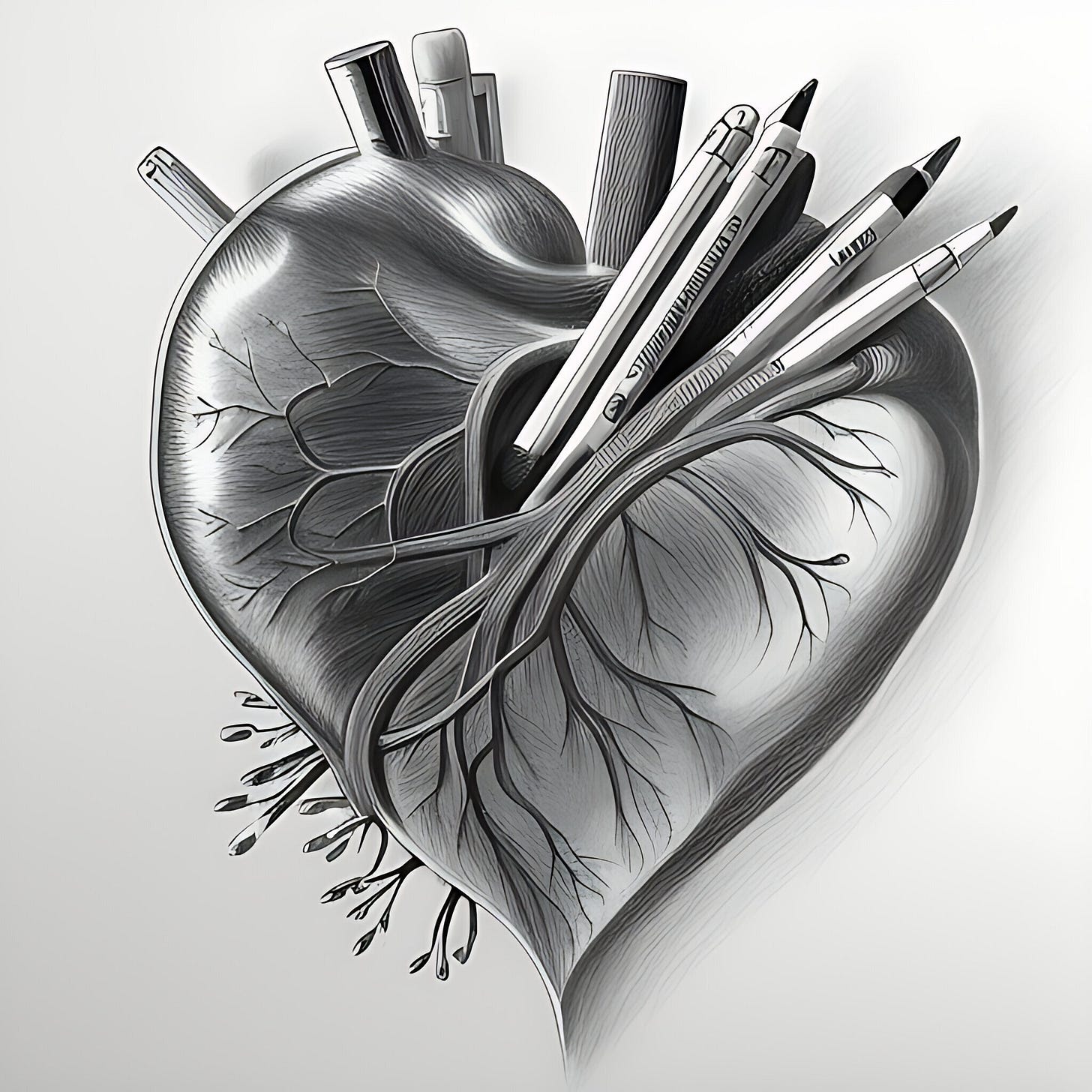Thoughts on Writing: A Substack Digest
Roundup of all of the amazing writing on writing happening here on Substack this week
Welcome to Create Me Free where I share all of my deep research into and musings about the complex relationship between art and mental health. While I touch on art as therapy and the benefits of creativity, I really dig into the ways that our mental health symptoms can impact our creative process, content, productivity, medium choice, identity and business.
In addition to my own writing, I love to use this space to celebrate, encourage, and amplify other writers who are doing amazing work in related niches. This is my Thoughts on Writing weekly digest, where I curate the best writing about writing on Substack, highlight connections between some of the pieces, elaborate on topics related to my niche or my own experience, and hopefully help you find new writing that educates, inspires and empowers you in your own work.
Okay, let’s dig in to all of the quality writing about writing that is happening right now here on Substack, including some tips and techniques for writers but mostly inspiration. You’ll find excerpts from and links to more than three dozen writers here on topics including comparing writing to childbirth, if consistency really is key in terms of showing up to the page, thoughts on novels-in-stories and writing for TV, interviews with authors, new book release announcements and so much more.
WRITERS: If I have tagged that I’ve shared your work here and you aren’t a paying member, then you should still be able to see it with the 7-day free trial. If that doesn’t feel sufficient, simply email me (kathryn.vercillo on gmail) and I’ll comp you a free month because you’re an awesome writer or I wouldn’t have mentioned you in the first place!!
From the past week or so then …
A Creative Frame
of shared a quote from Elise Ansel in A Way In: Taking Cues From The Old Masters:
“The artist to artist dialogue, however, is deeper and more mysterious than this. Some people say there is an unconscious dialogue between all artists living and dead. My own experience is that the old masters are a friendly presence in the studio, artists and mentors with whom I am united in a common love of the craft of painting, an unending source of inspiration, standards, and knowledge.”
I think this is a lovely frame for exploring all of the writing about writing shared here in this post today. Each of the writers here is not only connected to one another as Substack writers but as a part of the writing/creative community today and through history. We all come to this work with a whole body of writing that we’ve taken in as readers. The people living and dead and even fictional who join us in this make for an amazing collective energy, don’t they? Don’t we?
The Writing Life
of shared what we tell and what we hide
which is a great piece on the ownership of narrative, giving ourselves permission to write our version of the truth, and her experience doing that at a recent writer’s retreat.
“The issue of permission and the making of art can be peeled like an onion. And while I thought I understood where the story was going in the writing of On Permission, I neglected to comprehend one vitally important thing that was staring me in the face — my own Occam’s Razor — and this realization changed everything about the book’s foundation and voice: I could not write this book the way it needed to be written until I gave myself permission to tell my own story about permission. My own story was so bound up in horror and humiliation that I resisted talking about it publicly, much less writing about it.”
@Jamie Varon of shared The over-romanticization of being a writer
which is about how tempting it is to procrastinate writing and avoid addressing the fear of the blank page by engaging in romantic thoughts about the writing life. Oh we’ve been there, thinking such things as:
“ I didn’t think I fit the mold of what a writer looked like. I wasn’t lithe and pale in a turtleneck, drinking black coffee with a cigarette in my hand up against an exposed brick wall in some trendy up and coming burrow of New York City I probably hadn’t heard of.”
Until eventually:
“The romanticization of the writing process started to fall away. It was so much less about drinking whiskey in some Parisian bistro and so much more about showing up, day in and day out. ….
“Romance can be distracting. We can yearn for something too perfect. We can opt out of the messiness of the present in order to hold out for something we think is better. We can miss the magic of ordinary, daily life. We forget entirely that romance isn’t always big, sweeping gestures, but can be found in the way golden light spreads across a coffee table or the subtle sweetness of a perfect vanilla ice cream or the sound of rustling trees on a blustery day or the first peek of spring flowers after a long winter or the taste of squash after months of watermelon or just life—every day, over and over.”
I smiled at this, thinking about my piece on how the research phase of writing often feels like falling in love. It’s true. It’s an amazing feeling when you’re gripped by it and fully invested in the glittering period of infatuation. But it’s also true, as I say, but as Jamie says better in this piece, how important it is to move into steadier love, into writing day in and day out and celebrating the little accumulation of words.
ALSO: Jamie’s new novel has just come out and she shares what inspired her to write this … because it was the book she needed when she was younger.
You’re about to hit the paywall but there is SOOOO MUCH GOOD WRITING below it.
This weekly digest is only available to paying subscribers. Here’s some more about why.
I also do a free weekly digest of the best writing about art and mental health.




